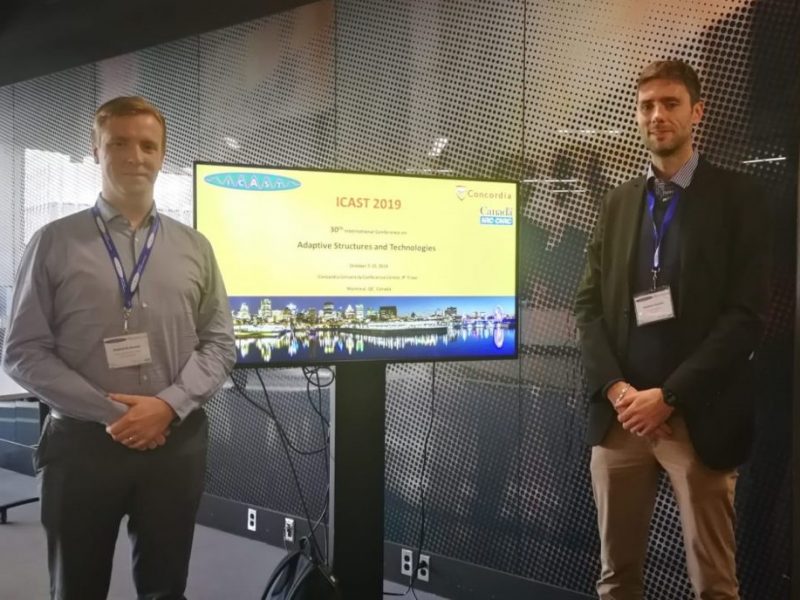ICAST 2019 – SABRE consortium presents surrogate model for shape adaptive airfoil
Stephane Fournier, Senior Research Associate in Morphing Structures at University of Bristol, recently returned from ICAST 2019. Also in attendance from the SABRE consortium, was Dr Roeland De Breuker, from TU Delft.
The Conference was the “30th International Conference on Adaptive Structures and Technologies” and took place from October 8-10, 2019 in Montreal, QC, Canada, also known as ICAST 2019. There was a friendly, collegiate, environment with interesting presentations about smart and morphing structures and multifunctional materials among others. It provided Stephane and Roeland with a chance to network and meet the delegates from the hosting institution of next year’s ICAST Conference, where SABRE partners are expected to be highly involved. Last year it was held in Seoul, South Korea and next year it will be held in Reggio Emilia, Italy following the tradition to be hosted annually by different institutions in the continents of America, Europe and Asia-Pacific.
The ICAST Conferences gathers a small international community and focuses on innovative scientific realizations in smart materials and structures to engineering applications. The Conference was structured in a single focused session for the first two days and two parallel sessions for student presentations the third day to allow effective information sharing and crossover between topics.
The presentation presented by Stephane was titled “Surrogate model of the aerodynamic, structural and mass properties of a shape adaptive airfoil for the blade of the Bo105 helicopter”. One of the most challenging aspects of integrating morphing (or adaptive) aerostructures into real world applications is the difficulties presented by the need to capture the physics of the morphing device at a component level when considering the impact of the morphing device on the performance of the overall system. The surrogate model presented is intended to simplify this process by creating a reduced order model of the morphing component that can be run at very low computational cost within a helicopter rotor level analysis tool – while still capturing the coupling between the aerodynamics, structures and actuation that are inherent to compliance based morphing devices like the FishBAC.
